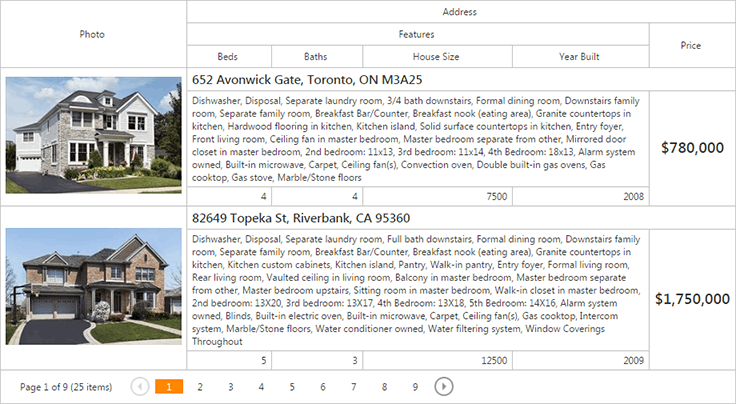Bands
- 2 minutes to read
ASPxGridView provides you with an ability to organize columns in logical groups (bands) and display them using multi-row representation.

There are two kinds of bands: header bands and data cell bands. Header bands are used to organize grid columns into logical groups by providing hierarchical multi-row headers. Data cell bands combine the functionality of header bands with the capability to present each data record in a hierarchical manner.
Accessing Columns in Banded Layout
The ability to define bands within ASPxGridView requires that the structure of the columns to be hierarchical. In this case, ASPxGridView’s ASPxGridView.Columns property provides access only to root level columns. To make it easier to traverse through all columns, ASPxGridView introduces a specific ASPxGridView.AllColumns property. It provides access to a read-only collection containing all the grid columns.
End-User Manipulations
In addition to being used for display purposes, bands can be dragged by end-users to re-order columns or hide a group of columns within the grid’s customization window. This is extremely useful if you need to quickly re-arrange or hide columns while preserving their logical grouping. To learn more, refer to the Column Moving document.
Resizing and column freezing features also work well with bands. Note that you can apply column freezing (controlled by the GridViewColumn.FixedStyle property) only to columns and bands located at the root hierarchy level (i.e., within the grid’s ASPxGridView.Columns collection).